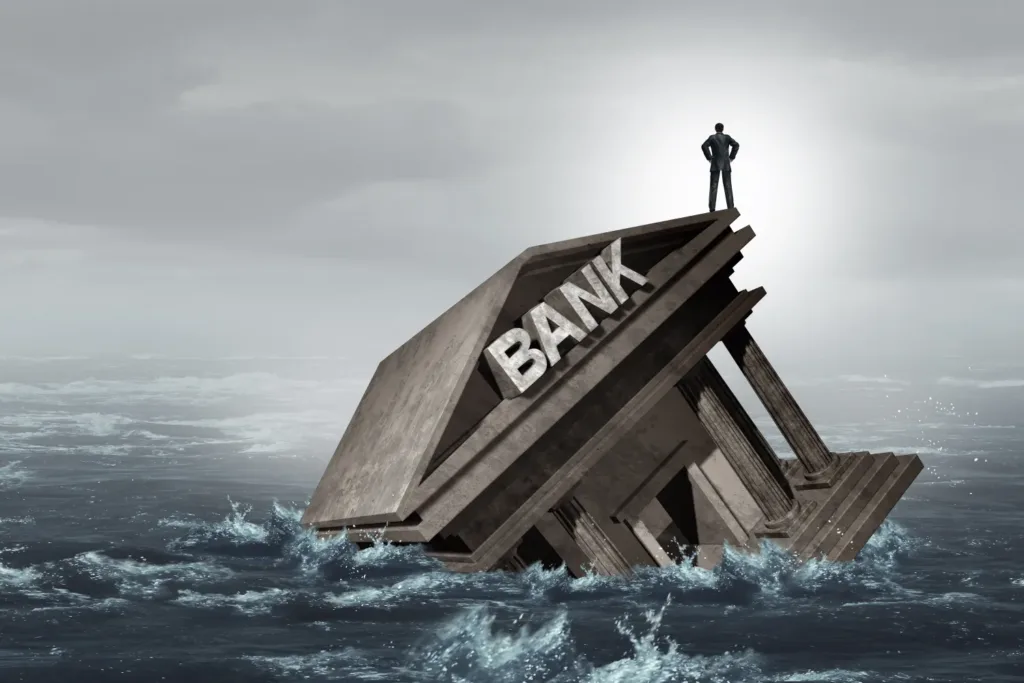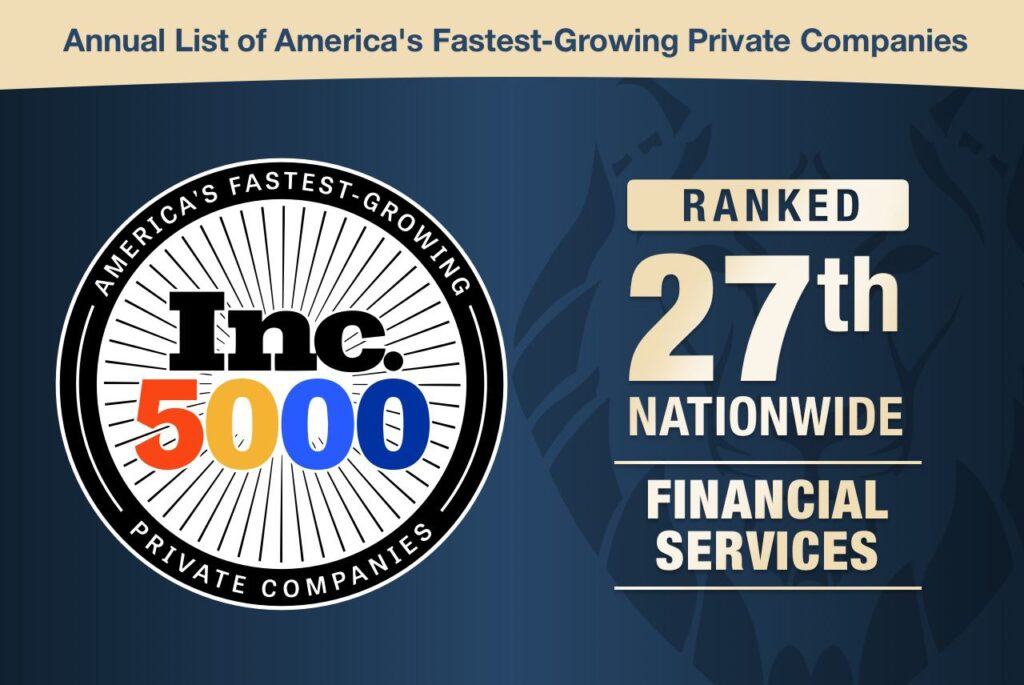In 2024, there’s growing concern about the health of U.S. banks, spurred by recent troubles in notable institutions like Silicon Valley Bank and Signature Bank. This article highlights why some banks might face difficulties in the coming year. We’ll look at factors causing stress in the banking world, including rising interest rates and their impact on regional banks and more prominent players like JPMorgan Chase and First Republic Bank.
We’ll also discuss the role of regulators like the Federal Reserve and the Federal Deposit Insurance Corporation (FDIC), which work to keep banks safe and protect depositors. From the bustling financial hubs of New York and San Francisco to the quieter streets of Dallas, read on to explore how different banks across America are coping with these challenges.
As we talk about the banking sector, profitability, liquidity, and market trends, we aim to provide a clearer picture of the banking landscape and what it might mean for depositors, investors, and the broader economy in 2024.
What Is a Bank Collapse?
A bank collapse is a dire situation where a banking institution fails and cannot meet its obligations to depositors and other creditors, essentially becoming insolvent. This usually occurs when a bank’s assets, like loans and investments, dramatically lose value, and it no longer has enough cash or liquid assets to fulfill its financial commitments.
The reasons for a collapse can range from poor management and risky investments to external economic factors like a severe downturn in the real estate market or sudden rate hikes by the Federal Reserve. Bank collapses can vary in scale, affecting smaller banks to larger institutions, and can have significant implications for the banking sector, financial system, and overall economy.
What Happens During a Bank Collapse?
When a bank collapses, a series of events can impact depositors, the broader banking industry, and the economy. Initially, regulators like the FDIC step in to manage the situation. They may facilitate the sale of the bank to a healthier institution or directly reimburse depositors up to a specific limit, typically $250,000 per account holder. This process aims to protect depositors and maintain confidence in the banking system.
The bank’s assets may be liquidated to pay back creditors, and shareholders often face significant losses as stock values plummet. In the broader market, a bank collapse can lead to a loss of confidence, potentially triggering bank runs on other institutions perceived to be at risk. This can strain liquidity even further and, in worst-case scenarios, lead to a broader banking crisis.
For the economy, the effects can be far-reaching. Credit may become tighter as other banks become more cautious about lending, impacting businesses and consumers. If the failed bank was a significant lender or played an important role in financial markets, its collapse could also lead to disruptions in those areas.
A bank collapse is a significant event that regulatory bodies and the federal government strive to prevent and manage effectively to protect the economy and ensure the financial system’s stability.
What Causes a Bank Collapse?
A bank collapse is typically the result of a complex interplay of internal mismanagement and external economic pressures. One of the primary causes is excessive risk-taking, where a bank engages in reckless lending or invests in volatile markets without adequate safeguards, leading to significant losses.
Poor management decisions, such as underestimating the risk of loan defaults or failing to diversify assets, can also leave a bank vulnerable.
On the external front, the Federal Reserve’s rapid changes in interest rates can affect a bank’s profitability, especially if it leads to many loan defaults or diminishes the value of the bank’s assets. Economic downturns or crises, such as a real estate market crash or a financial crisis, can rapidly erode the value of a bank’s assets and trigger a collapse.
Additionally, a loss of confidence among depositors, often fueled by rumors or real issues within the bank, can lead to bank runs, where many try to withdraw their money simultaneously. This may further strain the bank’s liquidity.
What Are the Signs of an Upcoming Bank Collapse?
Several indicators can signal that a bank is headed for trouble. Some signs include the following:
- Deteriorating Financial Indicators: A sudden decline in a bank’s profitability, as evident in its earnings reports, or a significant drop in the value of its assets can be a red flag. Additionally, if a bank’s capital ratios fall below regulatory requirements, it indicates financial weakness.
- Rapid Withdrawals or Bank Runs: If customers begin withdrawing their money in droves, it’s a sign of lost confidence and can precipitate a collapse by straining the bank’s liquidity.
- Credit Downgrades: When rating agencies downgrade a bank’s credit rating, it often indicates deteriorating financial health and can increase its borrowing cost, further exacerbating its financial troubles.
- Regulatory Intervention: Increased scrutiny or intervention from regulators like the FDIC or the Federal Reserve, such as imposing restrictions on the bank’s operations or requiring it to raise additional capital, can signal severe concerns about its stability.
- Exposure to Failing Markets: If a bank has significant exposure to a market experiencing a downturn, like commercial real estate or a particular industry, it can be at risk. The bank’s financial health is closely tied to the health of these markets.
- Market Rumors and Speculation: While not consistently accurate, persistent rumors and speculation about a bank’s instability can sometimes be a precursor to real trouble, as they can erode depositor and investor confidence and lead to liquidity issues.
Which Banks Failed in 2023?
2023 was a tumultuous year for the banking industry, marked by the high-profile failures of several banks. Silicon Valley Bank, Signature Bank, and First Republic Bank were the most notable. These failures sent shockwaves through the financial sector and raised serious questions about the stability of other financial institutions.
Silicon Valley Bank
Silicon Valley Bank, a key player in banking for tech startups and venture capital firms, experienced a rapid collapse that became a landmark event in 2023. Based in California’s tech heartland, SVB was instrumental in funding innovation but faced unique challenges linked to the tech sector’s volatile nature.
The bank’s troubles began when rising interest rates led to substantial losses in its bond portfolio, significantly reducing its liquidity. Additionally, as the tech sector cooled and startups began to burn through their cash without new funding, many turned to withdrawing their deposits from SVB.
This withdrawal surge escalated into a bank run, overwhelming the bank’s available cash. Despite efforts to raise capital and reassure depositors, SVB could not recover, leading regulators to step in and take control. This marked it as one of U.S. history’s most significant bank failures.
Signature Bank
New York-based Signature Bank was another significant casualty in 2023. Known for its work with law firms and real estate developers and, more recently, its involvement in the cryptocurrency sector, Signature Bank faced a crisis of confidence among its clientele.
The bank’s collapse was swift, coming shortly after the fall of Silicon Valley Bank, as fears spread about the stability of regional banks. Concerns about its exposure to the volatile cryptocurrency market and withdrawals from nervous depositors led to a liquidity crisis.
Despite having a diverse portfolio and a reputation for solid management, the rapid outflow of deposits and the broader panic in the banking sector proved too much for Signature Bank to withstand. Regulators intervened to protect depositors and prevent further systemic risk to the financial system.
First Republic Bank
First Republic Bank, another prominent name, especially in providing banking services to high-net-worth individuals and well-known for its real estate loans, also found itself in a precarious situation in 2023.
While it didn’t collapse in the same manner as SVB or Signature Bank, it faced intense pressure and scrutiny. Rising interest rates and a cooling real estate market put its loan portfolio at risk.
At the same time, concerns about the broader stability of regional banks led to increased scrutiny from investors and depositors. The bank’s stock price saw significant declines, and it became a focal point in discussions about the health of mid-sized banks in America’s banking system.
Which Banks Are Currently in Trouble for 2024?
Identifying banks at risk involves understanding various economic and industry factors. While it’s early to tell which banks specifically may be at risk of collapsing, it’s important to be able to recognize the potential signs.
Regional banks, often less diversified, may be vulnerable to rising interest rates and sector-specific downturns, particularly in real estate. Banks heavily exposed to struggling industries or those lagging in digital innovation also face challenges in maintaining profitability and competitiveness, especially against larger institutions with more resources.
Monitoring signs such as stock price declines, credit rating downgrades, or operational cutbacks can indicate distress. While predicting the exact banks in trouble is complex, staying informed about financial health, market trends, and regulatory landscapes is critical for depositors and investors navigating potential risks in the banking sector for 2024.
How Can You Protect Yourself During a Financial Crisis?
During a financial crisis, protecting your finances is essential. Start by building an emergency fund to cover unexpected expenses. Diversify your investments, including assets like stocks, bonds, and precious metals, to mitigate market shocks.
Keep your money in FDIC-insured banks to safeguard your deposits against bank failures. Tackle high-interest debt to reduce financial burdens and consider refinancing loans for better terms amidst changing interest rates. Stay informed about economic developments and bolster your job security by diversifying your skills or developing secondary income sources.
By being proactive, knowledgeable, and adaptable, you can navigate the uncertainties of a financial crisis and protect your economic well-being.
The Bottom Line
As we’ve explored, the banking landscape in 2024 is fraught with potential pitfalls, from the risk of regional bank collapses to the broader implications of a financial crisis. Understanding the causes and signs of bank instability, from rising interest rates to regulatory challenges, is important for anyone navigating these uncertain times.
While institutions like the FDIC provide some safety nets, individual vigilance and proactive financial planning are essential.
In times of economic uncertainty, protecting your finances becomes a priority. Building a solid emergency fund, reducing debt, and diversifying your investments are essential. Among the various strategies for safeguarding your assets, one stands out for its historical resilience: buying precious metals.
Gold and silver have long been seen as hedges against inflation and economic downturns. They can provide a stable store of value when other assets are declining.
This is where American Hartford Gold can help. As a trusted leader in the precious metals industry, they offer a range of products and financial services designed to help you secure your financial future. Whether new to precious metals or looking to expand your portfolio, American Hartford Gold provides the expertise and resources you need to make informed decisions.
Contact us today to begin expanding your assets with precious metals.
Sources:
What Happens When a Bank Collapses | The Motley Fool
Three banks have collapsed,183 new banks could fail, says new study | USA Today
What Happened to Silicon Valley Bank? | Investopedia
Failed Bank Information for Signature Bank, New York, NY | FDIC






